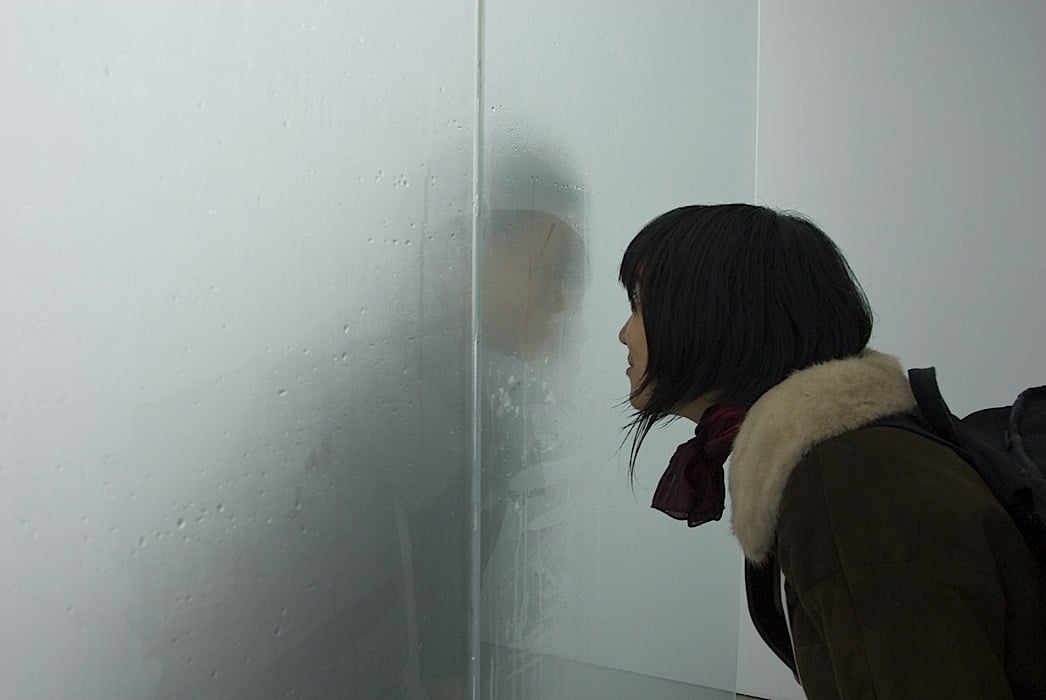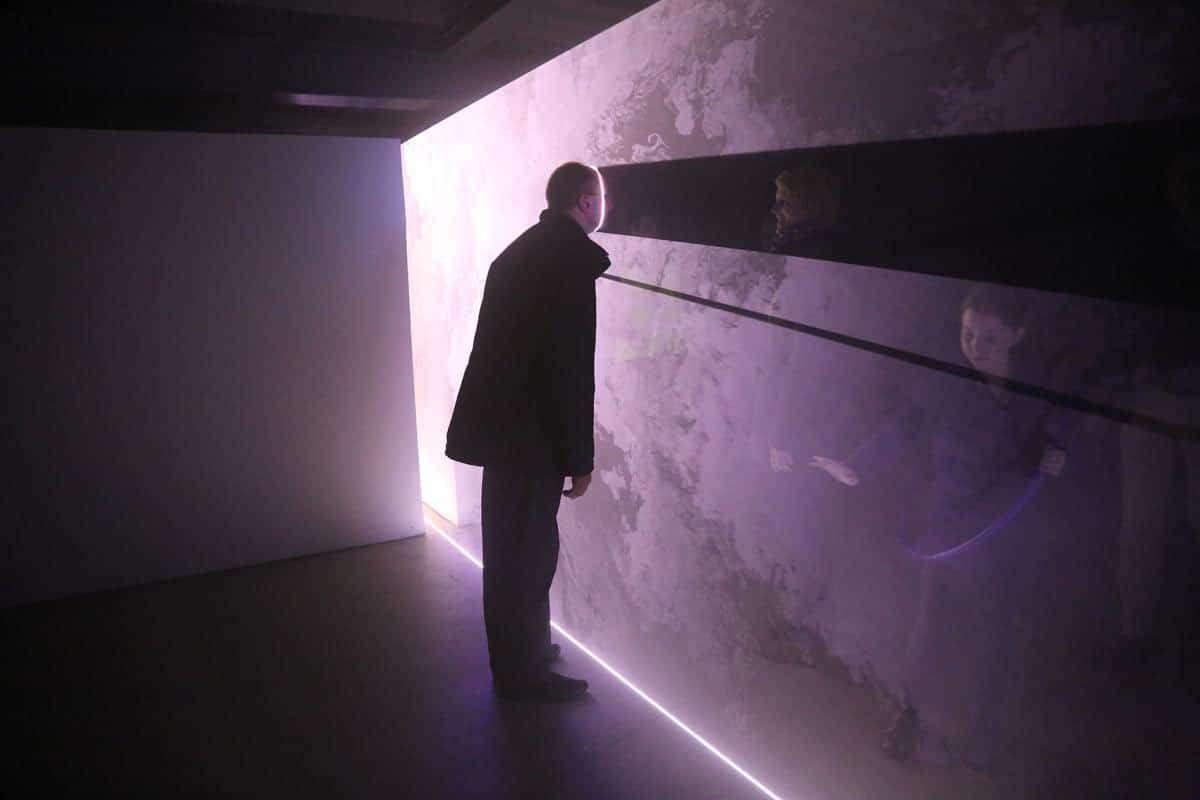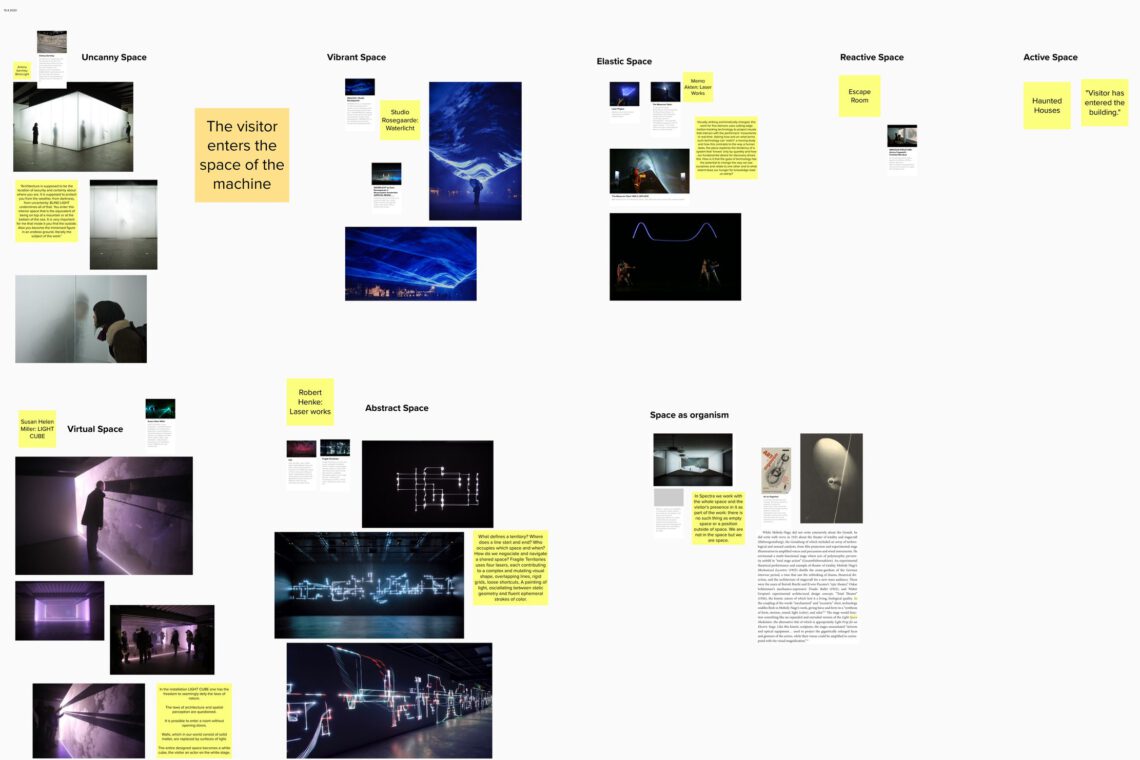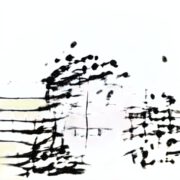An idea for an interactive installation made of laser and light:
In the walk-in interactive installation of laser, light and haze, visitors enter the space of a learning machine (“AI”). In this metaphorical machine room, walls that in our physical world are made of solid matter are replaced by surfaces of laser and light. If one wants to pass through these walls, they seem to react curiously to the intruders. A dialogue between man and machine develops: the walls move to the side or they try to imitate the movements of the visitors. The rays of light continue the visitors’ movements and dance together with them.
The space of light and haze seems fascinating and eerie at the same time. The laws of architecture and spatial perception are questioned. After all, architecture is generally supposed to be a place of security and certainty about where you are. It should protect people from the weather, from darkness, from uncertainty. The installation “Visitor entered the building” undermines all this. The entire designed space becomes a liquefied white cube, the visitor an actor on the unstable light stage.

What does it mean to be physically present in a room? How do rooms affect us, and how do we affect them? The perception of ourselves and the spaces surrounding us are bound to our senses, to our bodies. World and human being are in a physical-dialogical relationship. Only through movement do we perceive. “Visitor entered the building” wants to make this dynamic relationship visible, tangible, experienceable, in terms of a disembodied, digital space. It will, like a living being, react to our actions, change. And can thus be perceived as an actively behaving being and counterpart, which embodies the complexity and inscrutability of the present machine (“AI”) through its conception as a constantly (changing), ungraspable space.
Of course, the title “Visitor entered the building” also refers to the topics of automated social control and video surveillance. Actively acting spaces are known above all from ghost stories. Artificial intelligence is perceived as uncanny and dangerous, especially when fueled by Hollywood dystopia. The room takes up this narrative and transforms it, together with the visitor, into a playful mutual approach, a meeting, a flirt, a dance.
After all, the visitor is part of the learning process of the machine. With his presence and his behaviour he trains the neural networks. The learning process becomes transparent to humans through the imitating and playing around behaviour of the machine. The visitor learns that he is not at the mercy of the machine, but that his actions influence and change the behaviour of the machine.
Photo: Laserinstallation by Susan Helen Miller
Translated with www.DeepL.com/Translator (free version)
Collection of material (pdf): Gedankensammlung The space of the machine


